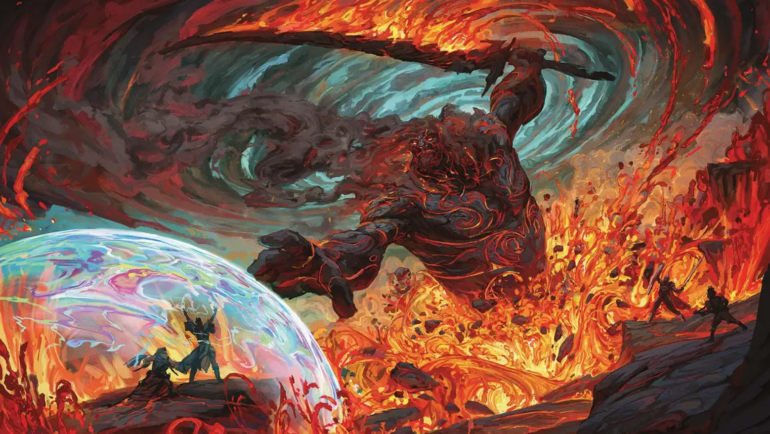TL;DR:
- Dungeons & Dragons responds to fan concerns about AI-enhanced art in “Bigby Presents: Glory of the Giants.”
- Artist Ilya Shkipin used generative AI to add “detail” and “polish” to some illustrations.
- Notable issues with AI-generated art in the book, particularly in the depiction of the Altisaur dinosaur.
- Wizards of the Coast replaces AI-enhanced artwork and no longer credits Shkipin.
- Ethical and copyright concerns surround AI-generated art in the industry.
Main AI News:
In a recent development, Dungeons & Dragons has taken significant steps to address concerns raised by fans regarding the use of generative AI in their supplemental lorebook/bestiary, “Bigby Presents: Glory of the Giants.” The initial release of the book featured illustrations that left some enthusiasts feeling somewhat uneasy. Following a series of inquiries on various platforms, the book’s artist, Ilya Shkipin, acknowledged employing generative AI to enhance his artwork, describing the AI’s role as adding “detail” and “polish.”
Notably, one of the illustrations that drew substantial attention was the depiction of the Altisaur, a dinosaur within the bestiary. Critics argued that it represented an extreme example of AI-generated art, exhibiting peculiar artifacts, unconventional patterns, vestigial limbs, and subpar texture rendering, with a noticeable lack of well-defined musculature.
Further scrutiny revealed that three out of the four dinosaurs that were replaced in subsequent editions of the book (Altisaur, Ceratops, and Regisaur) bore striking resemblances to their original concept art. Among these, the Altisaur was singled out as appearing to have been merely flipped and processed through a generator, resulting in a distorted AI creation.
In response to these concerns, Wizards of the Coast has taken action to ensure compliance with their no-AI policy. Artwork previously attributed to Shkipin has been replaced, and he is no longer credited for his contributions. Among the replacements, Claudio Pozas is credited with three dinosaurs and Quintin Gleim with one. Other artists involved in replacing the AI-generated content include Linda Lithen (Frost Giant Ice Shaper), Daneen Wilkerson (Frostmourn), Daarken (Maw of Yeenoghu), and Suzanne Helmigh (Stalker of Baphomet).
The use of AI-generated art raises significant ethical and moral concerns, particularly regarding the sources of data used to train these algorithms. Many AI programs have utilized artists’ work without permission or compensation, causing contentious debates in the creative community. Notably, Adobe’s recent AI generative fill tool, Firefly, seeks to address these issues by utilizing ethically sourced images. Additionally, the matter of copyright in AI-generated art remains largely uncharted territory, with legal precedents often favoring the protection of human-made art over machine-generated output.
Conclusion:
The actions taken by Dungeons & Dragons in response to the AI art controversy signify a commitment to maintaining the integrity of artistic contributions in their products. This move underscores the industry’s growing awareness of the ethical and legal challenges posed by AI-generated art, emphasizing the need for responsible and transparent practices in the creative sector. It may encourage other companies to consider similar policies and engage in discussions about the role of AI in art production.

